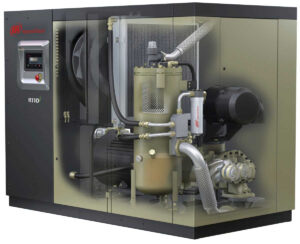

Revolutionizing the screen printing industry through cutting-edge technology and quality service
Anatol Equipment Manufacturing Co.
1429 S Shields Dr
Waukegan, IL 60085


Revolutionizing the screen printing industry through cutting-edge technology and quality service
Anatol Equipment Manufacturing Co.
1429 S Shields Dr
Waukegan, IL 60085

Shopping for an air compressor for your shop can seem overwhelming because there are so many variables. To help you navigate the world of air compressor shopping, we have compiled five steps to choosing the right air compressor for your shop.
The one thing you absolutely must do when choosing an air compressor is to select one that will provide enough air force to power your screen printing shop. Most screen printing presses require an air compressor that is at least 7.5 horsepower. You’ll also need to consider the cubic foot per minute (CFM) output that is required by your press. CFM requirements vary from machine to machine, and your press manufacturer will provide the CFM requirement for your press.

The Anatol Vector uses 90% fewer pneumatic components
and requires a smaller compressor than similar machines.
If you plan to power multiple presses from one air compressor, you’ll need to calculate the required CFM for all machines. We recommend adding together all of the CFM requirements of your presses and other equipment, then adding 25 additional CFM to help ensure all of your machines get enough power from the compressor when operating simultaneously.
When choosing an air compressor for a screen printing shop, you’ll be looking to purchase either a reciprocating air compressor or a rotary air compressor. In a reciprocating air compressor, a piston moves up and down to increase the air pressure. In a rotary compressor, the work is done by two rotors; as the rotors turn, the air is compressed between them.

A rotary screw compressor can be a good choice
for a screen printing shop’s pneumatic needs.
Rotary air compressors can be made to be more powerful than reciprocating air compressors, though there are plenty of reciprocating air compressors that are up to the task of operating a screen printing press. Rotary compressors provide continuous air pressure, while the pressure from a reciprocating compressor is intermittent, and reciprocating compressors tend to be noisier. Rotary compressors usually require less maintenance and have longer lifespans than reciprocating air compressors; however, reciprocating air compressors are usually the cheaper option.
Beyond power and type, there are a few other options to consider when choosing your air compressor. Because of their moving parts, air compressors require lubrication, usually in the form of oil. For reciprocating air compressors, splash or pressure lubricating options are available. In a rotary compressor, one of the rotors is continually coated in oil to keep the machine running smoothly. There are oil-free options that make use of nonstick metals to avoid friction.
Another decision you’ll have to make regards how your air compressor will be cooled. One byproduct of compressing air is heat, and that heat can damage the air compressor or your screen printing press. Most reciprocating compressors are water cooled, but there are air-cooled compressors, which are considered more environmentally friendly and can be easier on a shop’s utility bills. In a rotary compressor, the oil that lubricates that compressor also serves as the coolant. More rare are oil-free rotary compressors, which use water as coolant.
We mentioned that heat is a byproduct of your air compressor. Another byproduct is water, which can rust or otherwise ruin your screen printing press if it makes its way into the sytem. To combat the water created by the compressing process, many screen printing shops will outfit their air compressors with an aftercooler, or chiller. Chillers are added to the air compressor between the compressor itself and the air storage tank. The chiller drops the temperature of the compressed air, forcing out the water in the form of condensation, before the air moves into the storage tank and into your press.
We recommend hiring a professional contractor who has experience working with air compressors when installing your new machine. When it comes to installing air compressors, electrical outlets might need to be altered and electric or gas lines might need to be routed. Your contractor also can make sure you have adequate air lines running from the compressor to your screen printing press, and adequate water lines running to the air compressor if it’s a water-cooled machine. Keep in mind that you should purchase an air compressor ahead of having a new screen printing press delivered. You’ll want to have the compressor fully installed and all of the necessary hookups so that your press installer can get your screen printing machine fully up and running.
In all, there are a lot of decisions to make when purchasing an air compressor to go with your screen printing press, but as long as you follow the press manufacturer’s recommendations and choose to have your air compressor professionally installed, you should be able to have your air compressor and screen printing press up and running smoothly in no time.
If you’d like more detail on the types of air compressors and air compressor options, check out our full eBook: Finding the right air compressor for your new screen printing press
Your message was successfully sent!